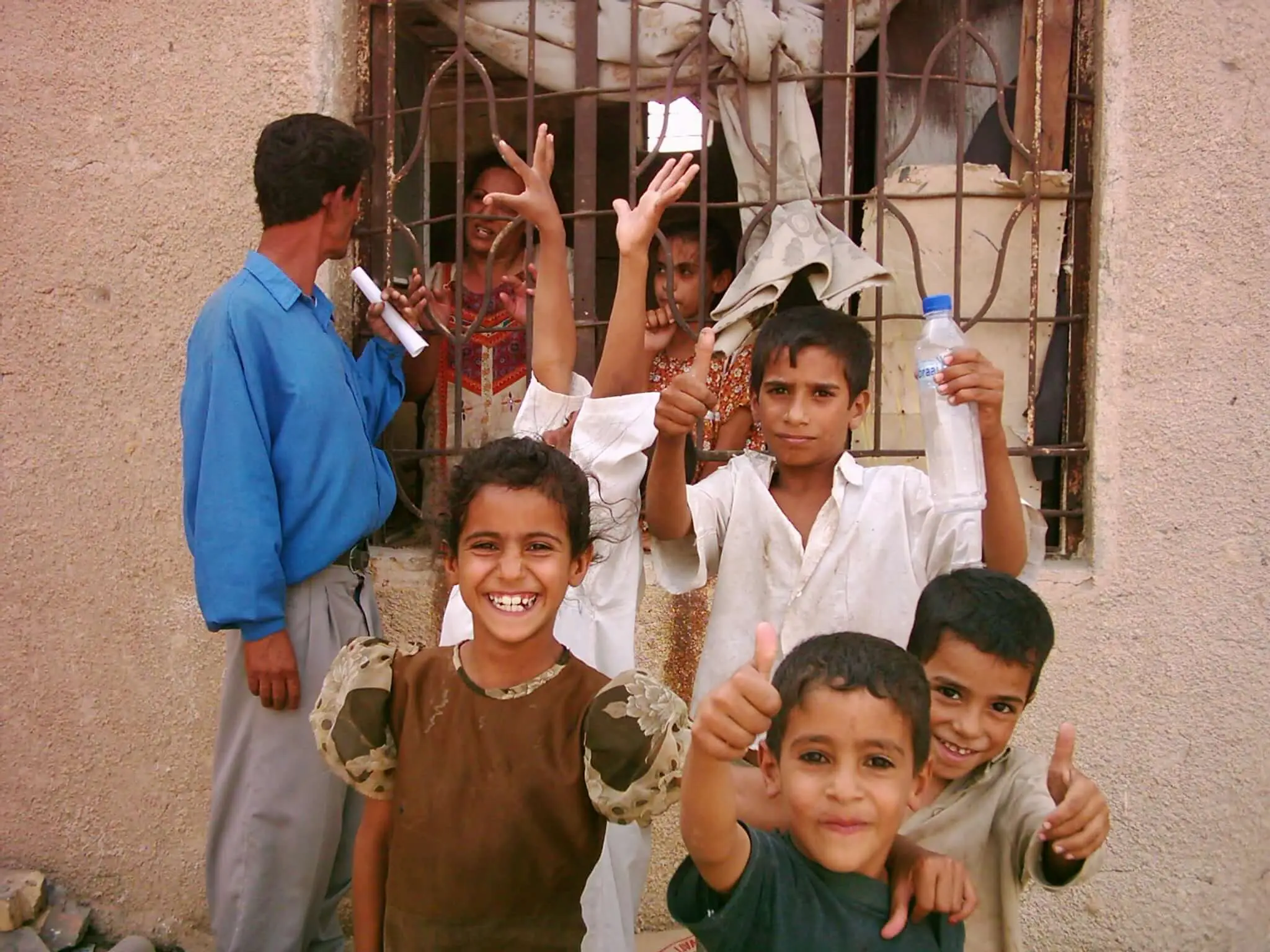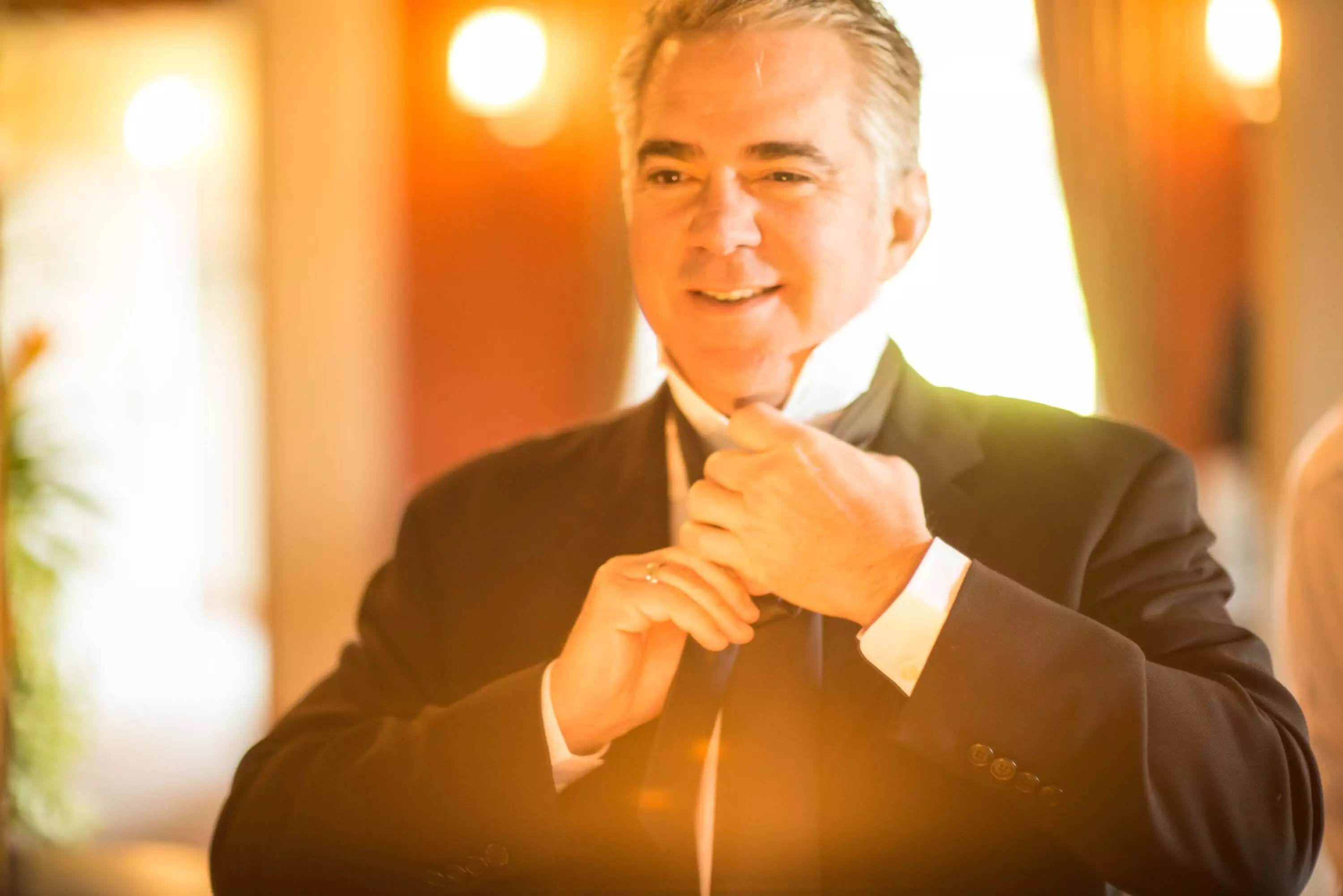Not far from Bloom HQ, in a seemingly disorganized home office, photographer Hal Harrison sits at an untidy desk. Two large monitors face him, a web browser in one, Photoshop in the other. Fashion magazines are scattered about the room, and a rack of women’s clothing (sizes zero to two) hangs in the corner. A large, fluffy white dog named Ziggy lies on the floor.
“I’m all about the clutter,” Harrison says. Diagnosed with attention deficit disorder as an adult, he finally realized any attempt at organizing his workspace was futile. He needs to see everything at once, he tells me, like having access to all his thoughts outside of his brain. From there, he hones in his attention where it’s needed, jumping from task to task in a nonlinear manner.
Today, Harrison is primarily a fashion and portrait photographer, but it’s probably not what you’d pick him for at first glance. Tall, bald, and stout, he is built like a football coach. He has a commanding presence, but speaks softly. He laughs and says, “I’m kind of sensitive. I’ll cry at a yogurt commercial, it’s ridiculous.” As a result of his fashion work, he now claims to own more women’s clothing than his wife.

Credit: Rose City Photography
Harrison never planned to be a photographer, least of all a fashion photographer, until well into his adult life. As an employee of KBR, a division of Halliburton, he spent 10 months in Iraq after the “cessation of major hostilities” in 2003. While there, he found time to take pictures with his 2MP Kodak point-and-shoot.
“That camera sucked the batteries flat in no time,” he remembers. “I wasn’t a photographer, but I had an eye for seeing the story between the lines.” Although new to the craft, Harrison intuitively possessed the most important quality of a good portrait photographer: empathy. He actually made a name for himself soon after arriving in Iraq, as he took the time to learn about the families of the Iraqis he worked with, despite the language barrier. It was strange for an American to make an effort to get to know people, but for Harrison, it was simply the natural thing to do. “They’re just like your neighbors, if you treat them that way.”
While he may not have considered himself a photographer at the time, the pictures he took while in Iraq still resonate with him. Most people who travel take pictures to tell their own story, but Harrison’s photos remind him of the stories of his subjects. He shows me a portrait he took of an Iraqi woman. “In nine months, she went from not speaking a word of English to easily speaking and writing it.” Harrison spoke a little Arabic when he arrived in Iraq, and picked up more while there, but he says it was nothing compared to what she accomplished.
When Harrison first arrived in Iraq, security was light. “In our convoy, the only protection we had was a 9mm handgun in the front car, and another one in the rear car. If anyone had wanted to attack us, it would have been too easy.” Fortunately, nobody did, and for the first four months, the threat of insurgents remained low. It was safe to walk the streets, which Harrison was fond of doing. One day, he came upon two girls inside a house, curiously looking out through a window. It made for a great photograph, but he was quickly approached by a man who demanded to know what was going on, why he was there.

Credit: Rose City Photography
A group of boys soon joined, who, unlike the man, were more than happy to pose for a photograph. The resulting image of them standing in front of the window with the two girls looking out makes for a striking moment. It also leads to another story. Harrison knew one of the boys in the photo as he had employed him to walk the perimeter of the KBR work area every day, picking up any cans, plastic bags, or other garbage that insurgents could have hidden explosives in if left unattended. “He was a great kid,” Harrison recalls. “I paid him a dollar a day, and he always showed up.”
Harrison tried to empower people in any way possible, by employing them when he could, or helping them get an education. This was especially important for girls, who often did not have the opportunity to go to school. Word spread of what he was doing, and not everyone was happy about it.
Insurgents were slowly gaining strength in the area, and the last thing they wanted was an empowered population. They wanted to be the sole source of knowledge, their strength therefore relied on the ignorance of the people. They posed a real threat to American workers, however, which limited Harrison’s ability to work with the community. Security tightened. Barricades were erected. It wasn’t safe to walk the streets anymore. Eventually, out of caution for his safety, Harrison was forced to leave, returning home to the U.S. earlier than intended. But the photographs he made, and the stories they tell, would stay with him forever.
Years later, as a truck driver for Oak Harbor Freight Lines, Harrison would again have the opportunity to take up a camera. The drivers went on strike, and he needed something to do. He told his wife he was going to take a stab at photography. What started as barely a hobby suddenly grew into a profession. In 2009, he rented an office with a man running a model school in downtown Portland, and began shooting portraits of aspiring fashion models.
Harrison had no previous experience with the modeling industry, but it didn’t take him long to realize something wasn’t right. The “school” was a scam, luring in young women with the promise of a glamorous career — but only after paying for classes, photographs, etc. Harrison did everything he could to sever ties with the school and the man who ran it, left his office space, and set out on his own. Scam or not, though, he made several real contacts through the school and, in 2012, he was asked to shoot a FashioNXT runway show.
As a truck driver turned photographer, Harrison wasn’t exactly sure what to do at a fashion show. The other photographers there weren’t helpful, either, and mostly just complained about him getting in the way. As such, he found a ladder and set it up behind them so that he could shoot over their heads. He wouldn’t be up close, but at least he could see the runway. Being his first time, he wasn’t expecting to get great images, anyway, but he knew the importance of building relationships and didn’t want to start out on a bad foot with more experienced shooters.
However, there was an unforeseen side effect of climbing the ladder: it gave Harrison a unique vantage point, making his photos stand out from the rest. The show organizers loved it. “I was more of a technician than an artist then,” he says. “But runway photography is just a matter of timing.” Artist or not, Harrison has had a partnership with FashioNXT ever since.
Although his current work may seem vastly different from his time in Iraq, the lessons Harrison learned there have stayed with him. He still works toward the goal of empowering his clients, and he knows the value of taking the time to get to know them. “I like to photograph people in a powerful way,” he says. “To show people in a new light, to make them feel better about themselves.”

Credit: Rose City Photography
He accomplishes this by putting in a lot of work at the beginning of a shoot. He uses a hand-held light meter, which not only ensures that his exposure is perfect, but gives him time to talk to his subjects without a camera between them. It’s relaxed, natural, and by the time Harrison presses the shutter button, both he and his subject are confident. “My very first image is going to be perfect,” he says. “I don’t shoot until I’m absolutely certain. And then I look at the back of the camera and say, ‘Wow, that looks great.’” His goal is to start out on a high point, and climb up from there. Whether he’s shooting a professional model or a personal portrait, he’s learned that subjects feel safer experimenting when they know they already have a great image in the bag. It’s an approach that has made him lifelong friendships, and when he has an idea for a shoot that’s “goofy and stupid,” he knows who he can call on to model for it.
By his own admission, Hal Harrison’s photographic career didn’t begin on talent. His journey was one of modest perseverance, fueled by a genuine desire to know people. There is wisdom to be gleaned from his story. Even in the highly competitive world of fashion, empathy goes a long way; and sometimes, when you find yourself pushed aside, your view blocked, just take a step back — and then climb a ladder.